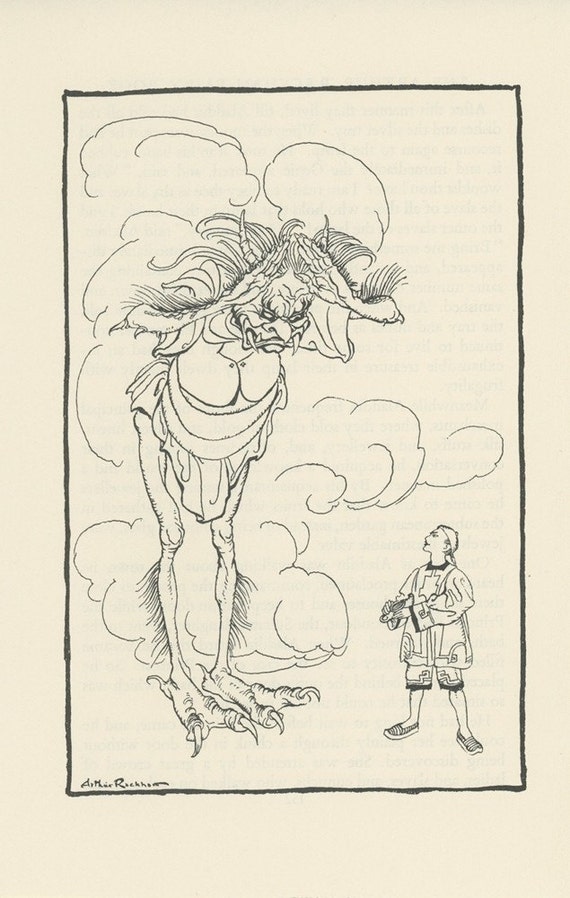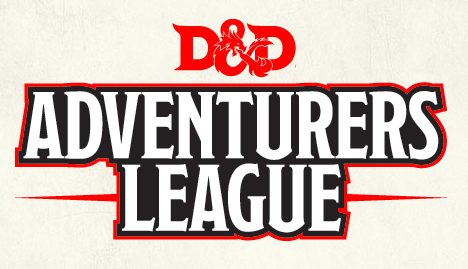A friend asked me:
I am supposed to DM for D&D for the first time since college (I’ve played RPGs since, but D&D is a thing of the past for me). A boy who has never played really wants to before receiving surgery for a life-threatening illness. Do you know how I can quickly bone up on the new rules and find a premade adventure (preferably free/online) that would be good to play? We just have an evening, him and some friends, mostly around 11 years old.
If you’re in my friend’s situation, I think you need three things.
- A frame story that sets the stage and convinces the kids that what they’re doing is playing D&D
- A mouthpiece character that lets you interact with them within the framework of the game to learn what kind of fantasy they want to explore
- Some devices to hang that fantasy on and launch it in the direction that they unconsciously want it to go
To unpack each of these a little bit, #1 should be a classic D&D scenario. You go into a dungeon, a wind blows out your torches and while you’re in the dark some monsters attack. This frame story could come from an existing introductory adventure like The Wizards’ Amulet, or from your own memories of D&D games and swords & sorcery fiction.
You’ll want to keep this short – it should hit as many of the expected bases as possible (combat, treasure, exploration, encountering mystery, solving problems – that order is roughly how important/easy to set up they are). I’d recommend letting the kids tell you about the rules if they’ve played before, to show off their sense of mastery.
This stage is about establishing trust. You don’t want to lose them by getting the details wrong; you want to retain the authority they vest in you while asking for their assistance as participants in making this shared experience happen. You might say “Hey guys, it’s been a long time since I last ran an expedition into the Caverns of Chaos” (or whatever your old gaming stories might suggest). “I understand the rules have changed since then; can you help me make sure I’ve got it right?”
The one thing you’ll want to bone up on rules-wise is how the rules for monsters work, because when the critters attack you’ll be taking on an adversarial role (in the sense that a black-hat wrestler sneers and postures to give his adversary a chance to look good). In that role, you’ll want to keep the monster’s strengths and weaknesses a secret and be confident that you’re adjudicating its opposition to the heroes fairly. (You can let the kids tell you how their special powers work and the overarching procedures for combat, because that stuff is more of a joint responsibility; most groups assume the monster stuff is the DM’s purview, though.) I’d only choose one big threatening monster, or maybe a horde of weak minions. Complicated combats can take a lot of time with modern D&D rules, but you just want this to be like the scene before the credits in a Bond movie.
#2 is the character you’ll use to get the role-playing going, once stage #1 has convinced the players to buy into the imagined world. There are a couple of pitfalls for these kinds of mouthpiece characters; here’s how I’d avoid them:
-


"Your wish is my command, O Master. I am powerful but servile, so you need not worry the DM will use me to screw you."
Your character should be strong enough that the players respect him/her/it, but it should clearly not be a threat to them. A genie that they summon from a bottle is good, or an ancient wizard that they release from imprisonment who vows to reward them in return. Because one of your jobs is to be the adversary, you need to establish right away that that’s not the case here. Lots of times players assume that the DM is always out to screw them (and that can be one fun part of the game), so the way you roleplay this character and set up this situation needs to overcome their natural and appropriate suspicion.
- Your character should be wise enough to impart the information you want to get across to the players, but fallible enough that the players get lots of chances to be smarter than your mouthpiece. The wizard might be doddering and absent-minded, so that the kids can say “Hey, Merlin, you’re forgetting something obvious!” The genie might propose a plan that would work fine if the players were genies too, and then have to be reminded that it has to work for people who can’t fly and turn into a whirlwind. These fallibilities should be broad and easy to pick up on. Lots of times DMs use their mouthpiece characters to show off and always be right; this deprives the players of their chance to shine, so you want to be sure that the way you roleplay this character has enough strength to earn the players’ respect but enough weakness that they don’t feel inferior to him/her/it.
- Your character should be painted in broad, vivid strokes. Subtlety is the enemy in RPGs; give your mouthpiece some schticks that are easy for you to do all the time and have fun with, and that are easy for the kids to pick up on. Lots of players are embarrassed to pretend to be someone else; by hamming it up and setting a high standard for buffoonery you make it OK for them to do their own corny dialogue in goofy voices.
#3 is how you’ll get the kids to set up the rest of the adventure. You want an item or concept that will bridge the imaginary world, in which the characters have discovered this device, and real world in which you and they are sitting around the table. The mouthpiece character is there to explain and interpret this process. What you want to come out of the process is a quest that the players have imagined for themselves without realizing that’s what they’re doing. Eliciting this quest will make the game sing in a way that a pre-packaged adventure can’t because it will express the kids’ hopes and fears. Once you engage them on this level, you won’t need to worry about the rules any more.
Tarot cards make a good device because they’re open-ended, evocative, and open to interpretation. Your mouthpiece could be a fortuneteller: The first card is a man, stabbed by swords. Did any of you know a hero who was betrayed? One of the players will pick up on this and make something up; at a similar age, the kids in my D&D afterschool program love to invent melodramas about their character’s family background. You don’t necessarily know yet which kid that’ll be, so leave it open for all of them to answer. The next card is a tower struck by lightning. This is the place you must go to avenge this betrayal. Does another of you know of a ruined tower?
Another good device is a prophesy. You can tailor this to have one item for each kid in the group, and have the items in the prophesy written on cards. You read the card – The Dark Lord will be conquered by a group of six working together; one of them will overcome his fear of snakes – and then have the mouthpiece say “Is there one among you who feels uneasy in the presence of serpents?” to remind them that they’re talking about their character’s fears (as a mask for their own). You could also have each kid write their character’s fear on a slip of paper and work this in, balancing it with a magical item that will help them defeat it (which they also invent for themselves on a card or by describing it to you/your mouthpiece/the group).
After you’ve got them set on a quest, it’s all improv from there. The things you want to do here are:
- Say “yes, and…” when there’s no conflict necessary. I climb up the mountain to the Dark Lord’s lair. “Cool, and on the way you see footprints of many beasts going into a smoking cave.”
- Say “yes, but…” when you need to create the feeling of overcoming difficulty. I think using the dice is important here. Sometimes the dice can say no to build tension: We search for a way into the cave. “OK, if you roll a 1 you find the secret door; if I roll a 6, a wandering monster comes.” Sometimes the dice create consequences and the possibility of failure: I swing my sword! “Awesome, the monster falls back before you. If you roll a 14 or better, you kill it immediately. On an 8-13, it gets in a swing before it dies.” (By this point the kids will likely be ready to let go of the reassuring structure of the usual combat rules in order to get more drama and speedy resolution.) It’s a good idea to set the stakes before they roll by specifying what will and won’t happen for different ranges of results, and to allow for total failure, partial success, and total success.
- Reincorporate; take things the players introduce and find a way to weave them back in. When the dice say a wandering monster comes, it’s the ghost of the murdered man in the Tarot card; when a player rolls really badly in combat, ask if they slipped in the blood of the monster his friend just slew.
Most of all, have fun! This is, I think, 99% of what makes people enjoy the games I run. When I’m entertaining myself and having a good time, it’s easy for them to come along for the ride. When I’m worried about what they think and whether they’re having fun, it creates a tone of anxiety and the potential for disappointment.




